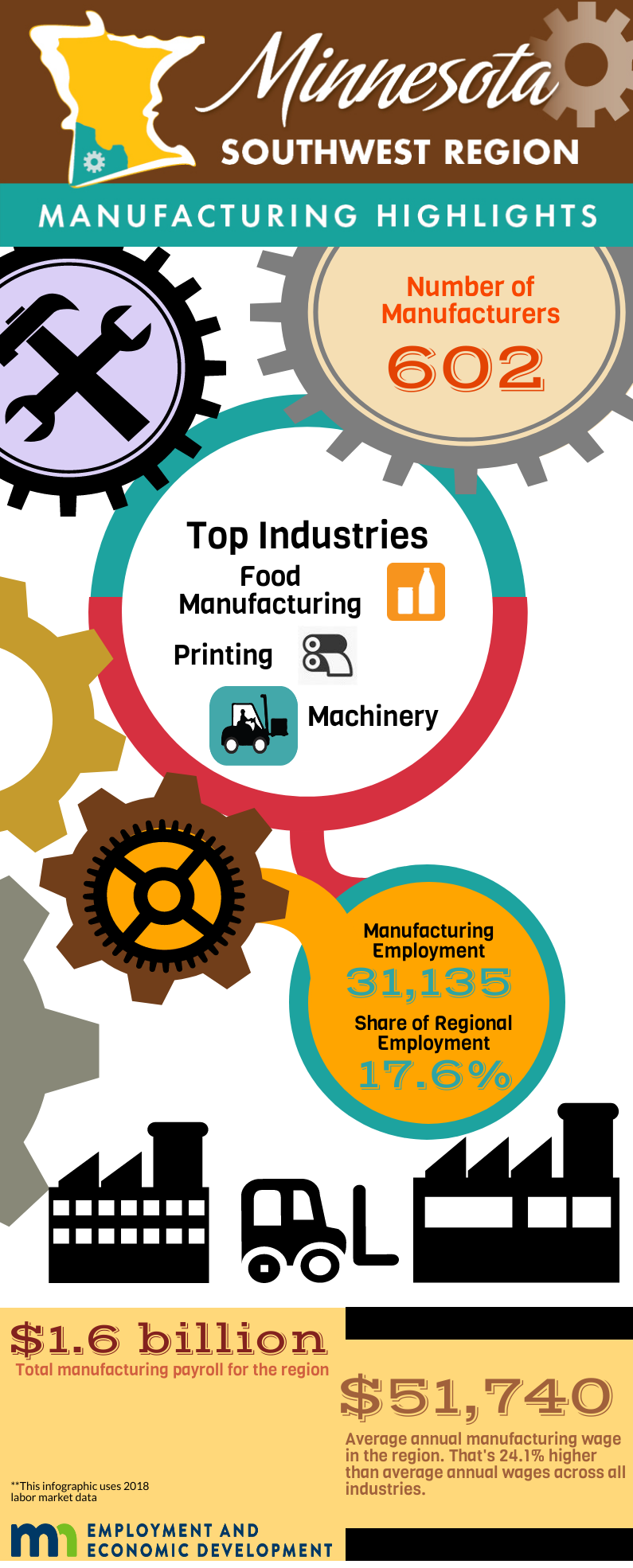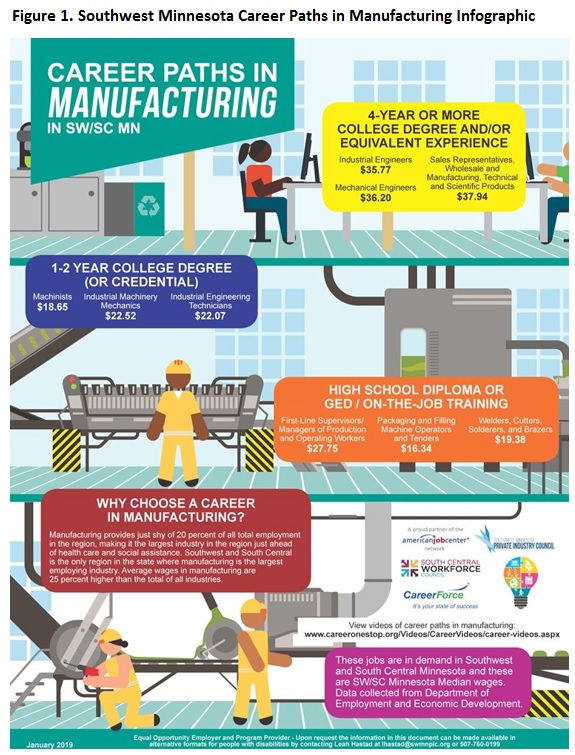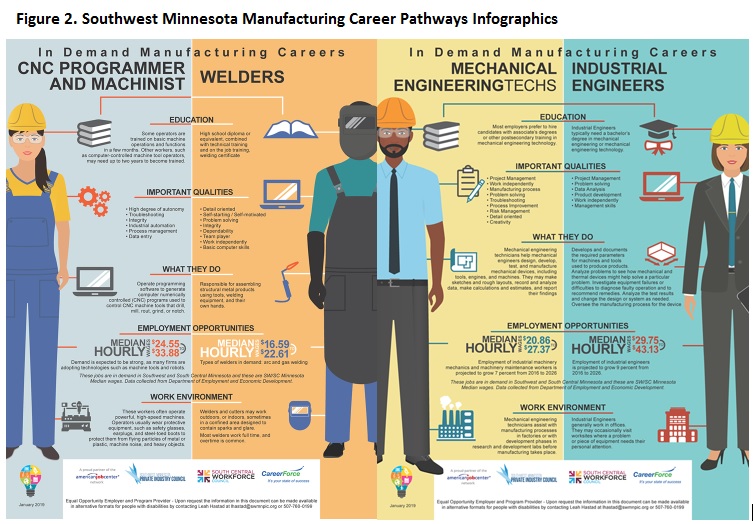 Southwest Minnesota is a national leader in agricultural production, and renewable energy.
Southwest Minnesota is a national leader in agricultural production, and renewable energy.
The region's thriving manufacturing sector includes food processing, machinery, printing, metal products, and computers and electronic products.
Want the freshest data delivered by email? Subscribe to our regional newsletters.
9/12/2019 11:30:00 AM
Luke Greiner
Manufacturing is a big deal in Southwest Minnesota, accounting for about one in every six jobs in the region. With 31,136 jobs at 603 firms, manufacturing provides almost the same number of jobs that the health care and social assistance industry (31,321 jobs) does. Manufacturing comprises 17.6 percent of total employment in the region, compared to just 11.2 percent of total jobs statewide.
 Health care has been growing rapidly in the region, and finally surpassed manufacturing as the largest employing industry in 2018. However, manufacturing still has the largest payroll in Southwest Minnesota, providing more than $1.6 billion in total wages in 2018, compared to $1.3 billion for health care and social assistance. Average annual wages were $51,737 in manufacturing, which was over $10,000 higher than in health care ($41,426) and the total of all industries ($41,780) (Table 1).
Health care has been growing rapidly in the region, and finally surpassed manufacturing as the largest employing industry in 2018. However, manufacturing still has the largest payroll in Southwest Minnesota, providing more than $1.6 billion in total wages in 2018, compared to $1.3 billion for health care and social assistance. Average annual wages were $51,737 in manufacturing, which was over $10,000 higher than in health care ($41,426) and the total of all industries ($41,780) (Table 1).

The career pathways highlighted in the campaign span educational requirements from a high school diploma or less up to a bachelor’s degree or higher, and everywhere in between. Job seekers interested in working in the manufacturing industry in Southwest Minnesota will find opportunities like welders – who earn a median hourly wage of $19.38, industrial machinery mechanics – with a median hourly wage of $22.52, and mechanical engineers – which command more than $36 an hour (Figure 1).


Contact Luke Greiner at 320-308-5378 or Mark Schultz.